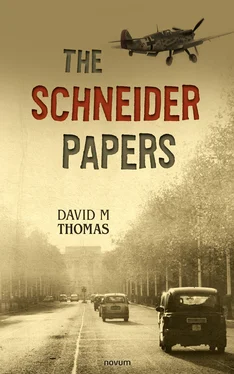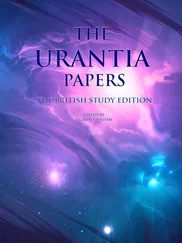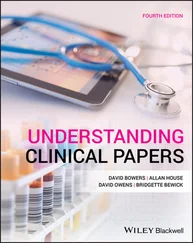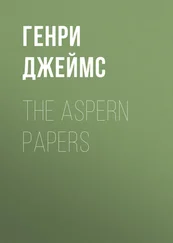1 ...7 8 9 11 12 13 ...26 ‘So you bought the patent?’
‘No, we purchased the British licence to use the technology,’ he replied sharply, embarrassed to acknowledge paying for the privilege. ‘In 1920 we bought the Billingham site from the government, or actually Brunner Mond did. Money was invested, serious money was spent, Major Cartwright, then after the Mond merger, we, I mean ICI, decided on further capital expenditure, tripling the fertilizer production capacity of the Billingham plant. This was 1927, and just in time for the economic crisis of 1929 which led to the dramatic fall in demand for nitrogen fertilizer products.’ Sir Harry raised his hands from the arms of his chair, as if to say ‘win some, lose some.’
Sir Harry read Cartwright’s impatience on his face and in his light finger-tapping on the arms of the chesterfield armchair. ‘This is background to our coal-to-gasoline project, bear with me,’ he said soothingly.
‘By 1929, 1930, there was over fifty per cent fertilizer overcapacity at Billingham, the plant was running at a loss and the return on capital employed had dropped below our target of five per cent. ICI was left with expensive, under-utilised equipment. The Board was under pressure from shareholders to identify new markets for this stranded asset.’ The Chairman rolled his hand in a circular manner, indicating he was moving on to a new chapter in the life of Billingham. He continued, ‘Our existing knowledge base in coal hydrogenation, that simply means the use of hydrogen in a chemical reaction, yes, let’s leave it like that, was based on Mond’s earlier involvement.’ Sir Harry finished his whisky, and a waiter appeared immediately at his side. Yes indeed, a refill was a good idea. ‘Thank you.’ ‘So, we thought that a new product market could be developed for the high capital equipment now lying virtually idle. I slightly exaggerate, but you take my point. Coal-to-motor car gasoline was the logical product. The Bergius process of coal hydrogenation also required high pressure and high temperature and associated equipment. We lobbied for state support. Fuel security, domestic fuel production and all that.’
‘Your lobby for state aid was successful, was it not?’ interrupted Cartwright gently.
‘Oh yes, the Oil Fuel Board of the Committee of Imperial Defence was very supportive. We threw at them the idea of submarines sinking our oil tankers. What they all saw were German U-Boats! Remember, the Great War was only eleven years behind us, and they all had served in one capacity or another. Oh, yes, we most certainly got the Committee’s backing.
‘We got after it, as they say, Major. The aim was to establish whether production of gasoline from coal could be carried out economically. Plan was, as soon as we had completed its commercial development, we hoped to sell the technology to the major oil companies. Ironic, don’t you think,’ he said with a smile.
‘So we built a small pilot plant at our Billingham site. It worked and we were treating ten tons of coal a day. At first we were optimistic that large-scale production could produce gasoline that would be price competitive with imported fuel, even though the profitability of the operation would be small.’
Sir Harry shifted in his armchair and tilted his head upwards to look at the ceiling, remembering those days.
‘It was a commercial battle to compete with imported fuel, that was the crux of it. We fought with the Board of Trade: proposal versus counter-proposal, counter-counter-proposal against counter-proposal. We argued that development of a large-scale commercial plant would increase national fuel security. Once the technology had been developed, the plant could be expanded rapidly during an emergency. We also argued that the increase in demand for coal would create employment within the struggling coal industry, particularly in the North East, an area with one of the highest unemployment rates in the country.’ He moved his hand like a bat, ‘This went on and on, back and forth, this table tennis game.
‘To put it simply, picture in your mind’s eye an equation: the cost of coal plus plant operating costs plus fuel distribution costs against cost of imported fuel at a garage outlet. if the resultant is negative then it’s uneconomic. Each parameter can change and change dramatically in today’s interconnected world. We can make it complicated but real by introducing various taxes and tax bands embedded in this seemingly simple equation. To make the equation work, and make a profit, we needed a catalyst, not chemical but financial. Government support, a subsidy mechanism.’
He paused, and half rose from his armchair to shake someone’s hand who was leaving the waiting room.
‘Oil price volatility meant the project was too risky for us to pursue alone. In 1933, we approached the Board of Trade with a proposal that requested a guarantee that our domestic production of hydrocarbon oils would receive tariff protection equal to the current import duty of same. The Board of Trade agreed to the tariff protection, but stipulated a cap on profits from the enterprise of five per cent to quell any allegations of preference to ICI. We immediately began the re-configuration of the Billingham plant at Stockton. So to answer your question, yes we have the technology, and yes we can have a working commercial coal-to-gasoline at Billingham, but only if we can benefit from government subsidy. Some influential politicians are baulking at the subsidy. So we are in the hands of the Pantheon, the Houses of Parliament.’
As if on cue, at the end of Part One, the waiter appeared with refills.
Sir Harry waited for the waiter to take his leave. ‘Now to address your first question, and our relationship with IG Farben.
‘Running a chemical company is an expensive business. Think of the army of research scientists and engineers working on projects that lead nowhere; we abandon pilot plants, and start on something else; think of pilot and commercial plant building costs; then sales and competition fighting costs, national as well as international. The Great War produced big changes in the international chemical industry, Major Cartwright. Here in Britain and Germany, government dictated product and volume requirements. In both countries government-led coordination made the larger chemical firms get better acquainted with each other, and led to the formation of new associations and alliances. We here in Britain founded the Association of Chemical Manufacturers and in Germany, and it started with the dye people, they formed an association called the ‘Community of Interests’, which is the IG Farben of today. This interaction changed the post war chemical industry in Europe.’
Sir Harry bent over and added a dash of water to his whisky.
He continued: ‘During the war, we were producing at full capacity, medical drugs, dyes, fertilisers and explosives. Then comes the end of the war. A very sharp decrease in demand, we have over-capacity, and we have to scale back. Lower demand equals unemployment in the industry. This now becomes political. Both governments, here and in Germany, responded by introducing tariffs to solve the political and industrial problems. We had import restrictions and tariff walls and limited international trade. In Britain we had the Dyestuff Regulation Act of 1921 which prohibited the export of dyestuff for years, and the Import Duties Act of 1932 imposed tariff on imported goods. For countries like Germany, which was and indeed is, very export orientated, protectionism was a serious problem. In general, firms in both countries had over-capacity and this led to a radical restructuring of the industry via mergers and the formation of business understandings.
‘Most firms used the merger and acquisition route to restructure or rationalize in the wake of the economic depression which followed the war. IG Farben in Germany in 1925, and ICI, here at home, in 1926, were the result of this merger and amalgamation process.
Читать дальше












